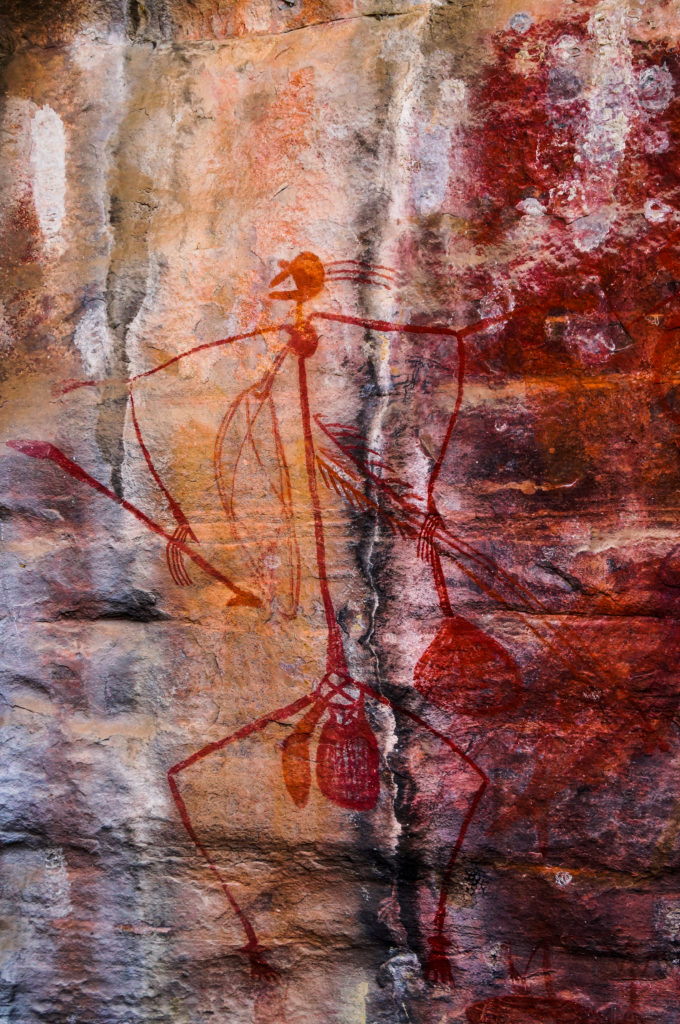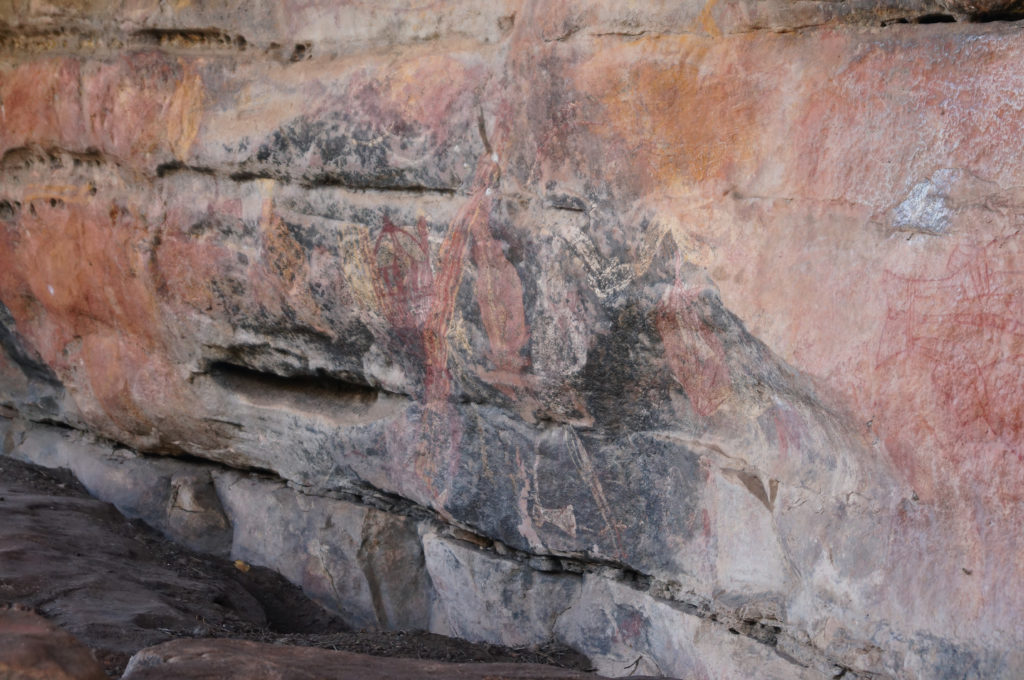The Ubirr rock art, Kakadu National Park, is a perfect example of a longstanding culture. I’ve always found differences in culture fascinating. Few can match aboriginal culture’s longevity, tradition and uniqueness.
Aboriginal peoples pass down a vast amount of stories, reaching across landscapes all over Australia. The Ubirr rock art, Kakadu, is one example of how these stories are told.
You can find a ridiculous amount of aboriginal heritage to explore if you know where to look. My favourites include many sites of cultural significance. The likes of Uluru and Kata Tjuta, for example. Ubirr ranks among them.
The reason being the clear cave paintings that are on display. Ubirr has plenty of pieces that are extremely clear and easy to reach. They’re also not hidden away in a ‘protected’ area such as some stretches of the Uluru base walk.
The local aboriginal word for ‘rock art‘ is ‘gunbim‘ which would make Ubirr rock art Kakadu read something like ‘Ubirr gunbim gaagudju‘. Alas, I cannot speak the language and this is probably completely wrong.
Some of these paintings are up to 20,000 years old. The paints used to create Ubirr rock art are made from a variety of different materials. However, the haematite paint preserves best. It’s an iron oxide, which is why the majority of the depictions are a reddish-brown colour.
Hands down, my favourite piece of rock art in Kakadu is this fella:

Now if I’m being completely honest I have no idea what exactly it’s a painting of.
The aboriginal people paint tons of different things from hunting to education. Including religious paintings such as those depicting Dreamtime, various dreamlike ancestors appear such as the rainbow serpent and the sisters.
Aside from what seems like a hunter, we also have fish and other creatures (wallabies and turtles for example). Like the art from other aboriginal sites the style is similar and from natural paint. And still far more creative than anything I’ve thought up.

So what about Ubirr? The site is quite a trek to reach and 40km from Jabiru in Kakadu National Park. It’s in the East Alligator region and consists of a bunch of sheltered rocky outcrops.
Although famous for its rock paintings, if you reach the top you’re rewarded with panoramic views of the Nadab flood plains. I’d argue the views are well worth the effort of walking up.
Then, there is the rainbow serpent gallery, and this is also one of the most sacred spots at Ubirr. Traditionally it was a women-only site. Luckily the rules are relaxed for non-indigenous men, which is why I was able to experience it.
The site itself has been in use for over 40,000 years, and a lot of the paintings are dated about 2,000 years old. Since then some of the paintings have been painted over.
In the main gallery, you can find a painting of a Thylacine, which has been extinct outside of Tasmania for approximately 2,000 years. Further proof of the age of some of the paintings.

Having worked out what the paintings were made with, and how old they are, the last thing to work out is how they got there.
If you make it to Ubirr you’ll notice that a lot of the art is quite high up in areas that would be extremely difficult to reach. This is what gives us the stories of the Mimi spirits, represented in some of the paintings. Lore states painted the paintings themselves by bringing the rocks down.
Each piece of Ubirr rock art, Kakadu, generally represents a story. Now I’ll be the first to admit that my story-telling is a bit rusty, and the storybook version here is better and more detailed than I’d be able to replicate. Better still, find aboriginal people to tell the stories.
It also seems like that is the only explanation.
If you’re planning to go to Ubirr keep in mind that the short walk is a circular 1km track but there’s a 250m relatively steep climb if you want the visit the lookout point. Here’s a map to help you find your way.
The climb to the lookout point will likely take an additional 30 mins. Access to the sites 3 galleries is restricted during the wet season so check with the Bowali Visitor Centre to avoid disappointment.

Feel free to share your photos of Ubirr and your theories on how those paintings got to such ridiculous places.
I am specifically interested in the history and stylistic variations of the rock art. I am looking for a guide to accompany me from Darwin arranging travel and overnighting in the park. I would prefer an Aboriginal guide.
I will be in Darwin from the 10-15th June.